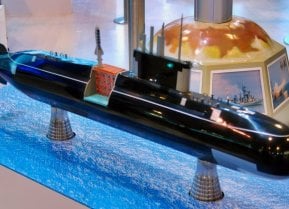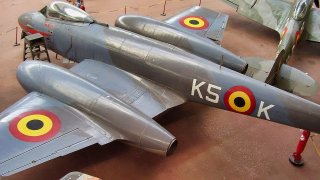The Forgotten Gloster Meteor: The Only Allied Jet Aircraft of WW II
The Gloster Meteor remained in service after World War II, and a total of 3,875 were built – far more than any other British jet aircraft of the era.
During the Second World War, the German Luftwaffe developed several jet-powered aircraft, beginning with the Me-262, Me-163 Komet, and the He-162.
Despite being among the most advanced aircraft in service, they were unable to turn the tide simply because Germany wasn't able to produce enough of the planes to make a difference.
Yet, largely forgotten is the fact that Germany wasn't alone in utilizing a jet fighter during the war.
Meet the Gloster Meteor I
The British aircraft made its operational debut at almost the same time as the Me-262, yet has never received as much notoriety.
One reason may be due to the fact that while the German-made fighter saw action against the Allied aircraft – notably bombers – over Germany, whereas the Meteor was initially tasked with trying to down the V-1 Buzz Bombs.
The Origins of the Meteor
Design of the Gloster Meteor fell to George Carter, and actually began in 1940 when turbojet technology was still in its infancy, yet while Germany gets the credit for having the first successful jet fighter, the fact remains that Britain was also at the forefront of the technology.
It is worth noting that Gloster had also developed the last British biplane fighter, the Gloster Gladiator, less than a decade earlier! Moreover, the same year that the Meteor began development, the Royal Navy employed its open cockpit Fairey Swordfish to great success in the raid on the Italian fleet at Taranto.
However, the Air Ministry was looking to the future, and approached the Gloster Aircraft Company to develop a single-seat, jet-powered interceptor due to the fact that at the time German bombers were considered a serious threat.
Much like the design for the Me-262, Carter opted for twin engines, but those were mounted to the aircraft's straight-wings compared to the swept-back wings.
The cockpit position in the Meteor was allocated to the forward portion of the fuselage however, which provided good all-around views.
The British had initially dubbed the aircraft the Gloster Thunderbolt, but the American Republic P-47 Thunderbolt was already in service, so the Meteor was selected as its official designation. Likely no consideration was given to the fact that Germany was developing Me-163 Komet.
Instead, it likely seemed fitting that early jet aircraft had names that evoked objects falling from the heavens.
Other names considered include Ace, Reaper, Scourge, Terrific and Wildfire.
However, Meteor was an apt moniker given the fact that the fighter wasn't much faster than the fastest piston-fighter of the era including the P-51 Mustang, Spitfire and Hawker Tempest.
Slow Development
The Gloster Meteor's development was anything but rushed. Whereas the P-47 Thunderbolts and P-51 Mustangs were conceived, tested, and put into service as quickly as possible, the Meteor's production was slow but methodical.
That was quite different too from the German efforts to develop the Me-262, but the Luftwaffe needed superweapons to turn the tide, and rushed out its first jet, even if it proved to be a dangerous aircraft to fly. The Allies wanted to ensure the Meteor was airworthy and safe to fly.
While both the Me-262 and Meteor were operational by mid-1944 the two aircraft never engaged in combat. Not only was the Meteor tasked with trying to stop the V-1 flying bombs, but its jet engines consumed fuel so quickly that it had a limited range.
The Me-262, which also consumed excessive amounts of fuel, was flying on its home turf.
The Gloster Meteor remained in service after World War II, and a total of 3,875 were built – far more than any other British jet aircraft of the era. The Meteor may have never engaged German jet fighters, yet it did see combat in the Korean War when it was flown by the Australian Air Force, but it was largely outclassed by the Soviet-designed North Korean and Chinese Mig-15 fighters.
Despite the shortcomings, the Meteor saw operation service in the 1980s serving with Ecuador's Air Force.
The last airworthy Gloster Meteor made its final flight at Bruntinghorpe Airfield in Leicestershire in January 2019. It has since joined the Classic British Jets Collection, where it will be maintained in running condition.
About the Author
Peter Suciu is a Michigan-based writer who has contributed to more than four dozen magazines, newspapers and websites. He regularly writes about military hardware, and is the author of several books on military headgear including A Gallery of Military Headdress, which is available on Amazon.com. Peter is also a Contributing Writer for Forbes.
All images are Creative Commons.


